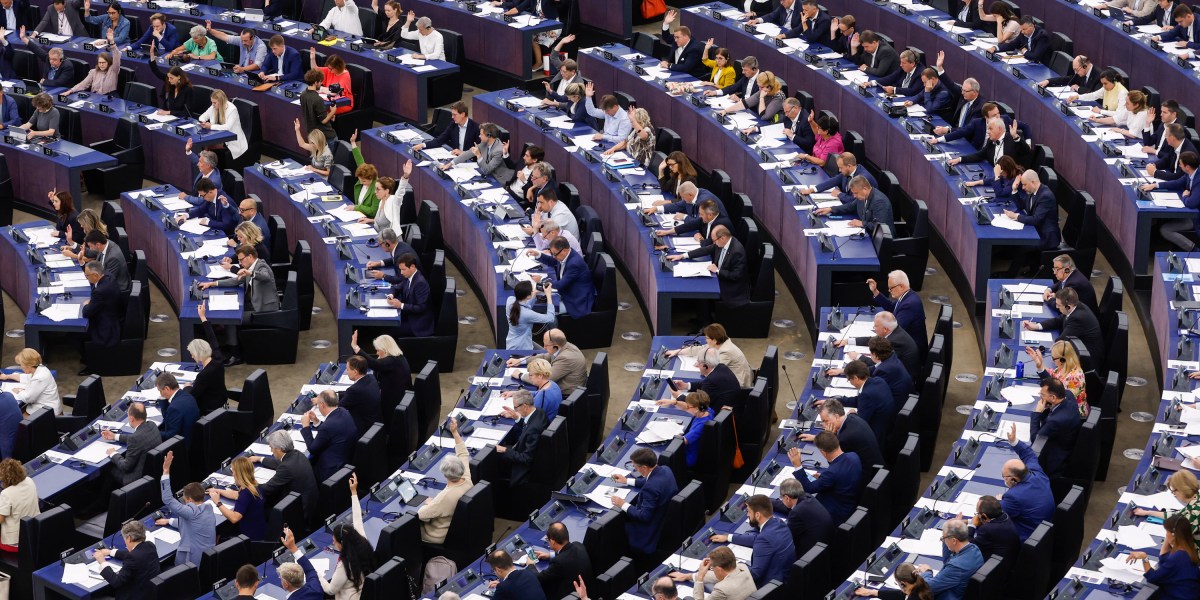Why the EU AI Act was so hard to agree on

The latest round of EU negotiations has introduced a two-tier approach in which foundation models are, at least in part, sorted on the basis of the computational resources they require, Connor explains. In practice, this would mean that “the vast majority of powerful general-purpose models will likely only be regulated by light-touch transparency and information-sharing obligations,” he says, including models from Anthropic, Meta, and others. “This would be a dramatic narrowing of scope [of the EU AI Act],” he adds. Connor says OpenAI’s GPT-4 is the only model on the market that would definitely fall into the higher tier, though Google’s new model, Gemini, might as well. (Read more about the just-released Gemini from Melissa and our senior AI editor Will Douglas Heaven here.)
This debate over foundation models is closely tied to another big issue: industry-friendliness. The EU is known for its aggressive digital policies (like its landmark data privacy law, GDPR), which often seek to protect Europeans from American and Chinese tech companies. But in the past few years, as Melissa points out, European companies have started to emerge as major tech players as well. Mistral AI in France and Aleph Alpha in Germany, for instance, have recently raised hundreds of millions in funding to build foundation models. It’s almost certainly not a coincidence that France, Germany, and Italy have now started to argue that the EU AI act may be too burdensome for the industry. Connor says this means that the regulatory environment could end up relying on voluntary commitments from companies, which may only later become binding.
“How do we regulate these technologies without hindering innovation? Obviously there’s a lot of lobbying happening from Big Tech, but as European countries have very successful AI startups of their own, they have maybe moved to a slightly more industry-friendly position,” says Melissa.
Finally, both Melissa and Connor talk about how hard it’s been to find agreement on biometric data and AI in policing. “From the very beginning, one of the biggest bones of contention was the use of facial recognition in public places by law enforcement,” says Melissa.
The European Parliament is pushing for stricter restrictions on biometrics over fears the technology could enable mass surveillance and infringe on citizens’ privacy and other rights. But European countries such as France, which is hosting the Olympics next year, want to use AI to fight crime and terrorism; they are lobbying aggressively and placing a lot of pressure on the Parliament to relax their proposed policies, she says.
What’s next?
The December 6 deadline was essentially arbitrary, as negotiations have already continued past that date. But the EU is creeping up to a harder deadline.
Melissa and Connor tell me the key stipulations need to be settled several months before EU elections next June to prevent the legislation from withering completely or getting delayed until 2025. It’s likely that if no agreement is reached in the next few days, the discussion will resume after Christmas. And keep in mind that beyond solidifying the text of the actual law, there’s still a lot that needs to be ironed out regarding implementation and enforcement.
“Hopes were high for the EU to set the global standard with the first horizontal regulation on AI in the world,” Connor says, “but if it fails to properly assign responsibility across the AI value chain and fails to adequately protect EU citizens and their rights, then this attempt at global leadership will be severely diminished.”
What I am reading this week
What I learned this week
Google’s CEO, Sundar Pichai, spoke with our editor in chief on the eve of the company’s release of Gemini, Google’s response to ChatGPT. There are lots of good bits from the interview, but I was drawn to the exchange about the future of intellectual property and AI. Pichai said that he expects it to be “contentious,” though Google “will work hard to be on the right side of the law and make sure we also have deep relationships with many providers of content today.” “We have to create that win-win ecosystem for all of this to work over time,” he said.





